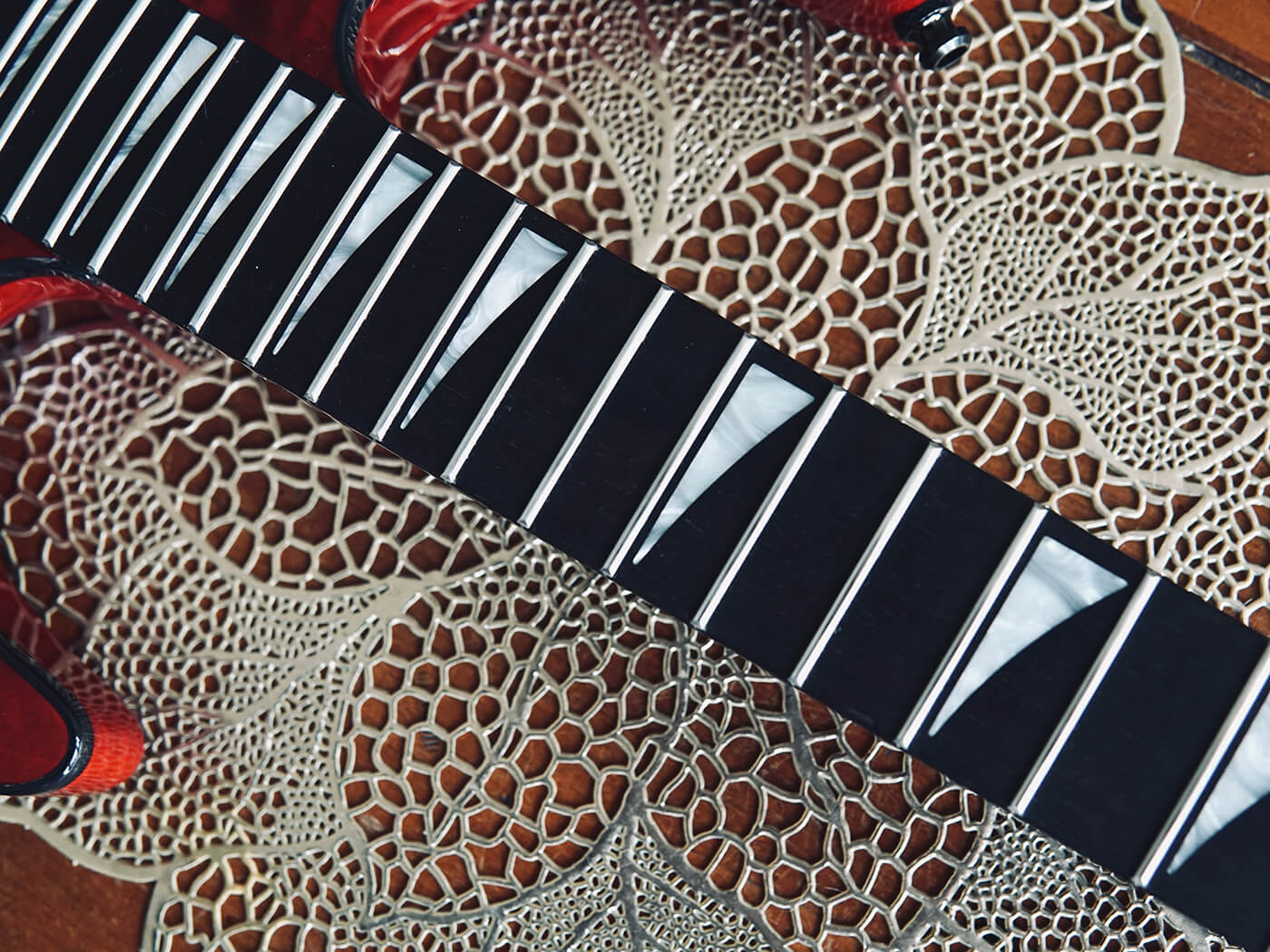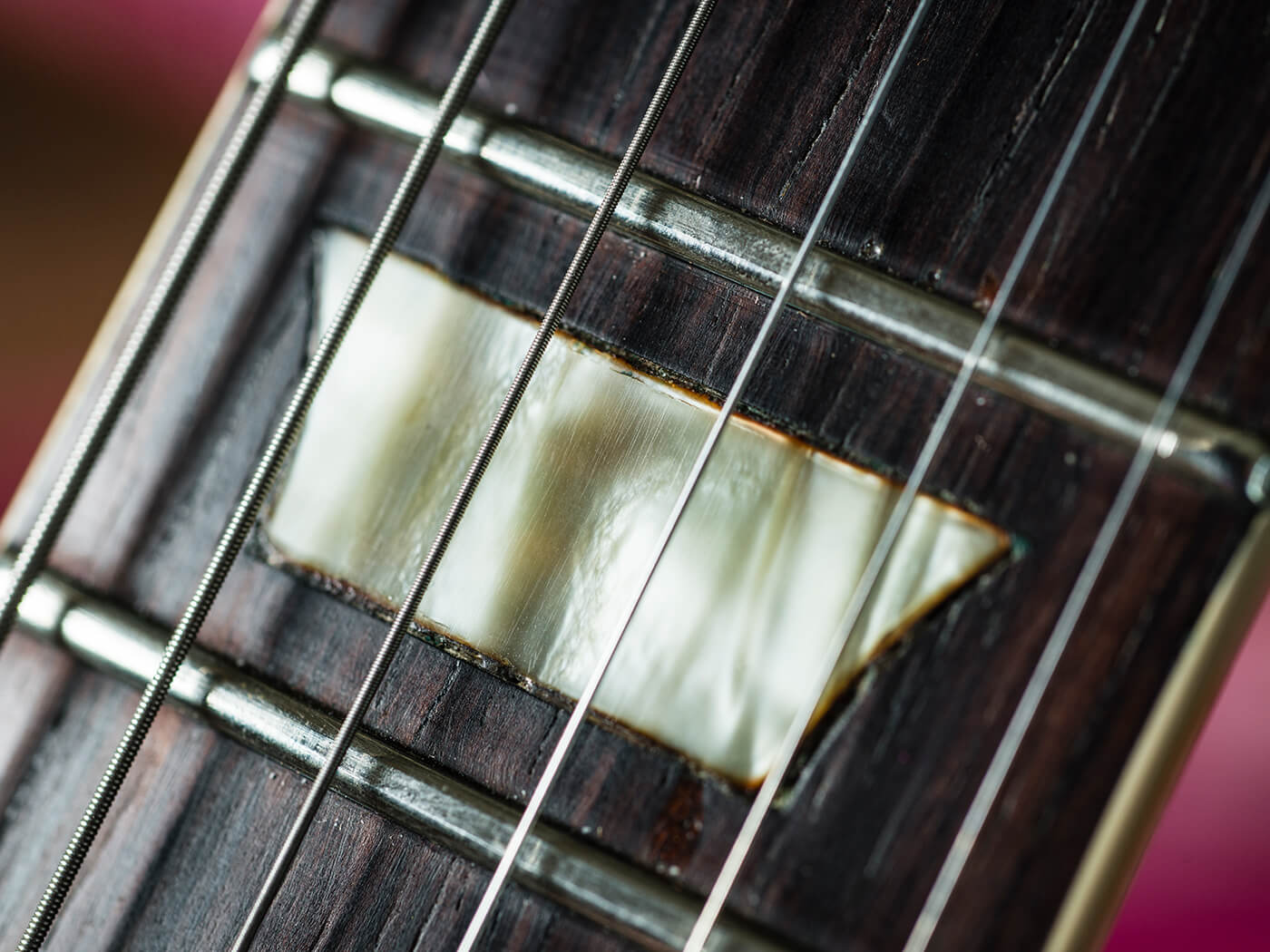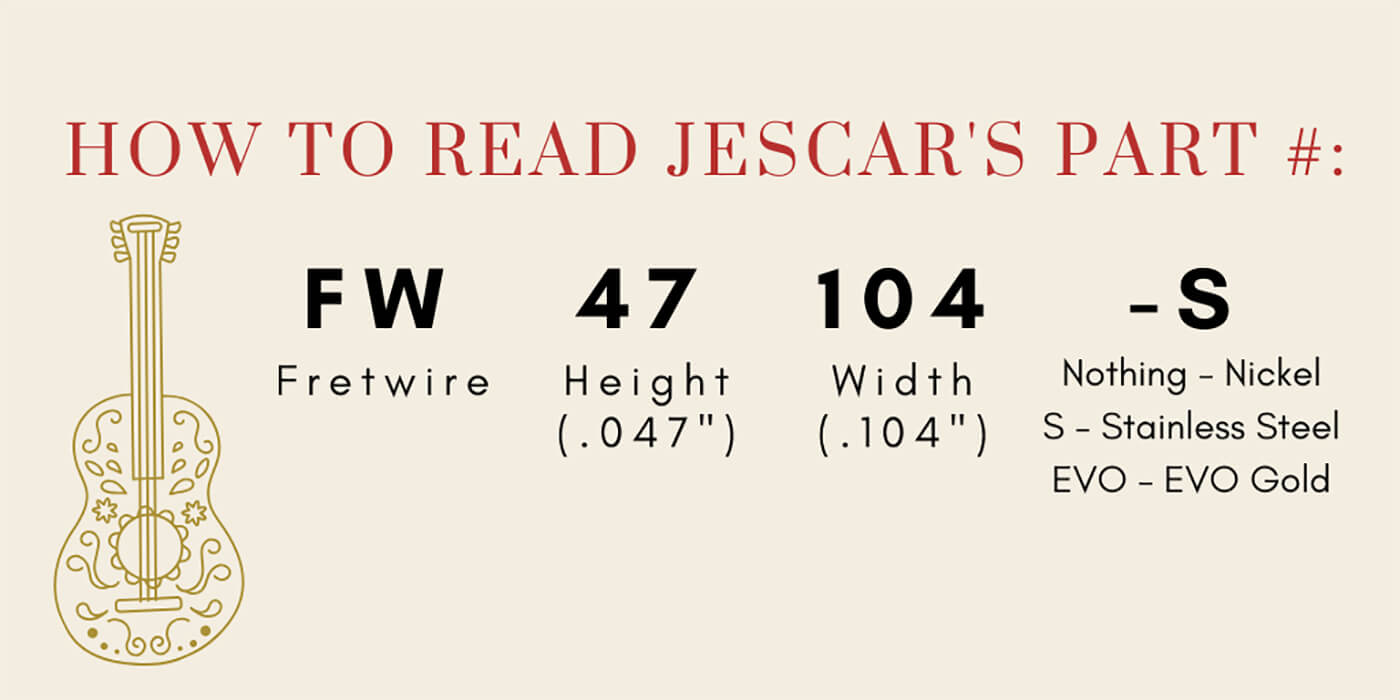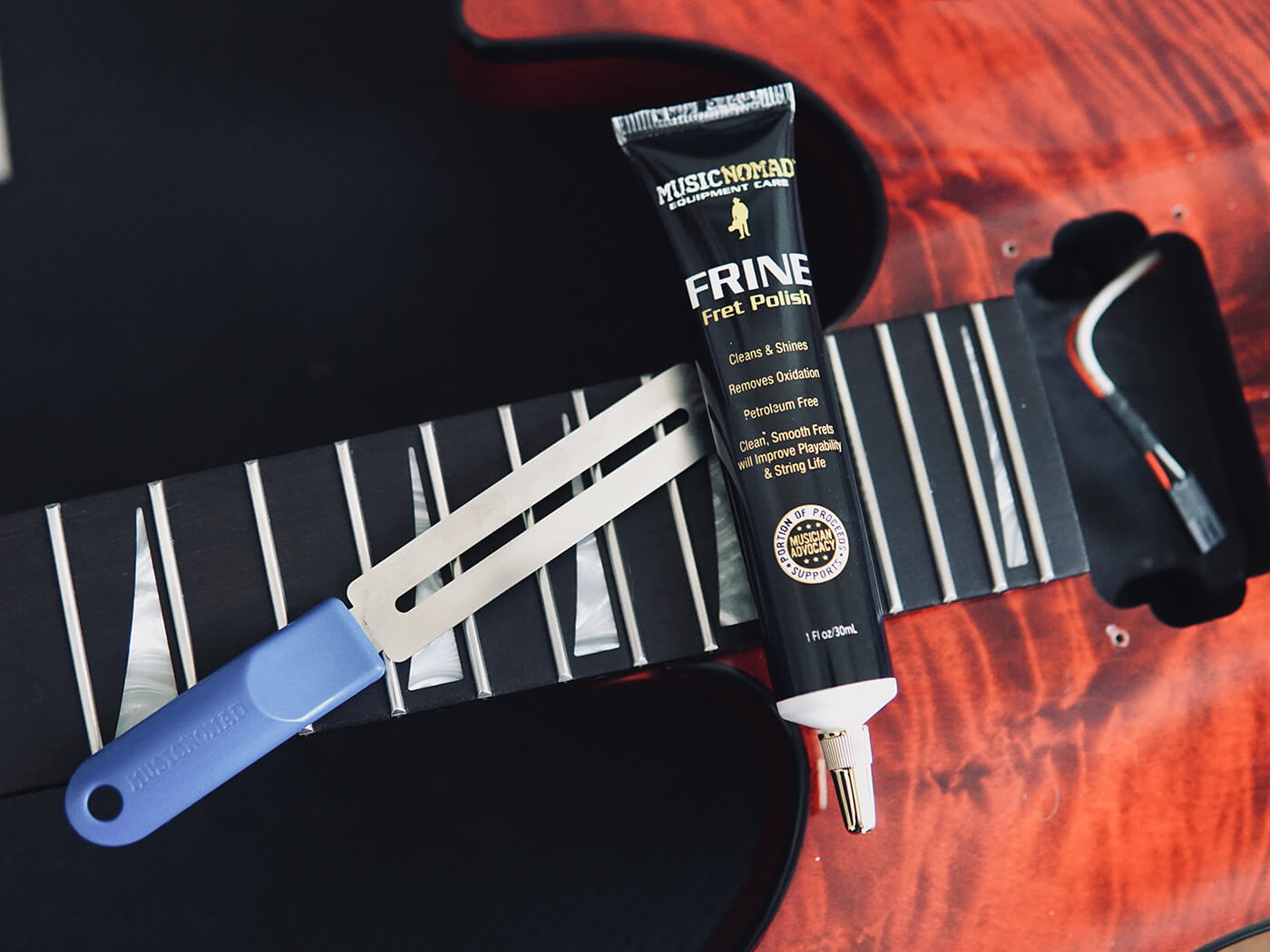Related Tags
The ABCs of Fretwire: Choosing and caring for your frets
How well do you know your frets? Here we’ll explain the differences in material, brands and sizing, and help you keep your frets in the finest fettle.

Stainless steel fretwire adorns this Warmoth Arcade maple neck with ebony fretboard, sized in the equivalent of Dunlop 6150
The world of fretwire can be daunting (not to mention extremely confusing) but today I’m going to give you an overview of the different types of fretwire, as well as the different brands you can choose from, and some tips about how to care for them. For some years now, I’ve been the manager of respected repair shop San Francisco Guitarworks. We’re respected across the US for our fretwork expertise, and so I hope my first-hand experience will help you cut through the vast amount of information and opinion that’s out there.
Before we start, I’d recommend trying as many different types and sizes of frets as possible – there’s no substitute for working out your own preference. However, it also helps to know exactly why you like what you like, and that’s what I’m here for – so that the next time you hear ‘47×104’, you won’t be baffled, whether you’re buying a new guitar or picking new fretwire to for your well-loved Gibson L-5.

The materials of fretwire
Nickel
The most basic fretwire, which comes standard in a variety of different guitar brands. Unless your guitar indicates it comes with stainless steel frets right out the gate, you most likely have nickel frets. While it’s commonly called ‘nickel silver’, these contain no silver at all. Over time, nickel fretwire wears down with play – eventually, it can cause the need of a fret level or even a re-fret, depending on the age of the instrument and how often it is played. Evidence of needing a level can often depend on a variety of factors, but divots on the tops of the frets can be a sure-fire indicator.
Stainless Steel
As you may have gathered, stainless steel frets are made out of stainless steel, which is a harder material than nickel fretwire and according to JESCAR (see below), has a higher grain structure. The resulting product is one that allows for near-effortless glassy playability and longevity, as stainless steel (SS) guarantees a high quality of fret life. Oftentimes, SS frets are more expensive to install because they are harder on the tools that luthiers use to work with them, but make no mistake, if durability is what you’re after, the long-term benefits are well worth the initial investment.
One thing that is worth noting – some have argued that SS frets “brighten” the tone of an instrument, but luthiers remain divided on this, and most feel that the difference is minor enough that it certainly shouldn’t dissuade you from the potential benefits of stainless steel.
EVO Gold
EVO gold fretwire is made out of a copper alloy (according to Luthiers Mercantile International, the elemental composition is CuSn15Fe1Ti0.1 –the more you know). One reason that some guitarists don’t like to use nickel is because of an allergy to the metal, and EVO gold meets the ‘nickel free’ requirement, and is harder-wearing than nickel, while not as hard as stainless steel. Another reason that people are drawn to EVO gold is the colour – similar to 12-karat gold in appearance, it retains this beautiful look once the frets are dressed, and will never look brassy or worn.

Brands & sizes
There are two major brands in the fretwire industry. You probably already know Dunlop as a maker of picks and other guitar accessories, but it also produces some of the most popular and widely-used fretwire around. The other big player is JESCAR, which makes some of the best quality fretwire in the world in addition to producing finishing products for automotive professionals and enthusiasts. Let’s take a look at the main differences between the two.
Dunlop
Dunlop fretwire is made in California and if you’ve bought a big brand guitar in recent years, chances are it’ll be sporting Dunlop. Their fret sizes are numbered by Dunlop’s product numbering system and while there are multiple sizes, the five most popular sizes are as follows (measuring the height of the crown x the width the crown):
6230: the smallest fretwire size, often found on vintage necks (.043″ x .078″)
6150: wide and tall, a wider width but shorter than 6230 (.042″ x .102″)
6105: modern narrow and tall (.055″ x .090″ )
6130: medium jumbo – note the lower height (.036″ x .106″ ).
6100: jumbo; typically billed as the largest size available (.055″ x .110″)
Dunlop measures their fretwire in metric & imperial systems and provides a guideline for how their sizes work at this resource.
JESCAR
Jescar spent many years manufacturing and producing components and machinery for the optical industry before moving into the world of guitar fretwire, and its wares are still produced to exacting standards in the same German factory that once produced glasses frames. Common sizes (which closely correspond with the Dunlop measurements above) include:
FW43080 (.043” x .080”)
FW47104 (.047” x .104”)
FW55090 (.055” x .090”)
FW57110 (.057” x .110”)

Choosing the best wire for you & some common installation notes
Choosing fretwire size is a very personal choice and there is really no one size fits all solution. If you love vintage Fender guitars, you might feel at home with a vintage-style radius and a small fretwire size (and possibly stainless steel, so you don’t have to re-fret your vintage instrument down the line). If you’re a shredder, you might find yourself more comfortable with the jumbo frets, which allow for greater ease of techniques like tapping. People that bend a lot may enjoy the feel of medium jumbos.
When it comes to installing new frets on your instrument, there are a few things to keep in mind. If you play a bound neck instrument (such as a Gibson Les Paul), your tech will have to undercut the fret tangs to seat the frets comfortably within the binding – this is often an extra charge due to the laborious nature of cutting the tangs but this is the best way to do a bound fretboard refret that will look like the original.
If you have a finished maple fretboard, many techs will prefer to re-shoot the fretboard with a new finish before re-fretting the neck. The reason for this is because when the frets are pulled out, there can be some chipping on the original finish. You can refinish the board with lacquer, polyurethane, or even a few coats of gunstock oil. And of course, if you have a vintage instrument and are recoiling at the thought of refinishing your fretboard, you can ask your tech to retain the original finish – depending on the neck, it can be possible, albeit a bit more costly.
Looking to install your own frets?
First off, I recommend taking a class if you can find one locally. Learning how to re-fret your instrument can be tricky for a first-timer and learning from a luthier will save you time and money in the long run. Familiarize yourself with the hugely useful online guides produced by online parts retailer StewMac and pick up a fretting tool set. Dan Erlewine shows us how to use the set below:
The advantages of using a neck jig cannot be understated for both refrets and fret levelling – it will make your life a lot easier and make sure that the work comes out evenly and on the level. The process of a refret is very in depth and it requires its own article so instead, I refer you to this Mike Bloomfield refret done at StewMac – pretty cool stuff!
Fret polishing
If you’re not looking to install your own frets but just want to keep them in good condition so that they last longer and play better, no problem! Basic fret-care is something you can do yourself, though it’s important to ensure the products you’re working with are designed for guitars and won’t damage the finish, etc. I’m a big fan of Music Nomad’s products, as I’ve found them to be consistent and safe time after time, but there are various other options out there to check out.
First things first – get some fret masks, especially if you have a finished maple fretboard. Use the fret masks to protect your fretboard no matter what kind of wood or finish you have on there. Music Nomad’s fret polishing kit includes various fret mask sizes plus a polishing cloth & their excellent Frine fret polish, which helps to remove oxidation. When I polish frets, I usually perform a three-step process:
- Clean up the fretboard with an appropriate fretboard cleaner – this helps to remove any gunk off the fretboard
2. Masks the frets and polish the frets with the fret polish – this usually takes a little bit of elbow grease to get the frets polished thoroughly
3. Oil the fretboard with – unless of course your fretboard is a finished maple board, then this step isn’t necessary

Now you should have some pretty nicely polished frets – it’s a great thing to occasionally add to your string changing routine, especially if you have acidic sweat.
The world of fretwire is vast but hopefully with some of the tips from this article, you’ll feel more well-equipped about your next guitar purchase as well as your next trip to the local repair shop!
For more guides, click here.
